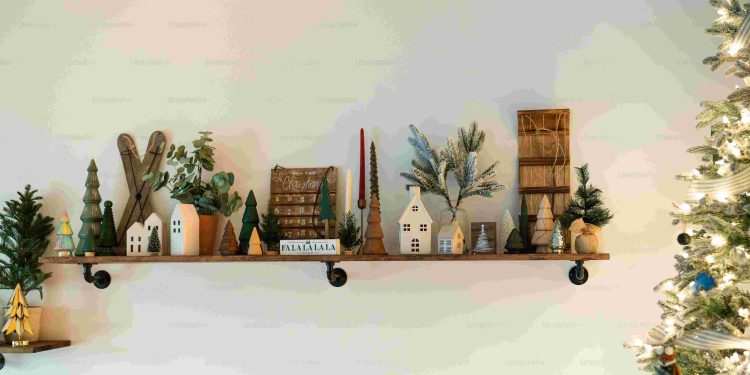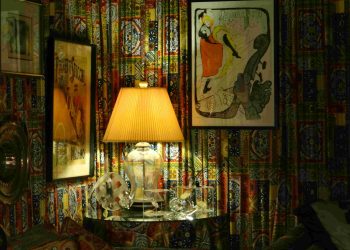Chic Chaos decor inspiration

The perfect home isn’t pristine; it’s alive.
Our obsession with perfection is suffocating creativity, stifling personality, and leaving our spaces devoid of soul. In today’s era of social media aesthetics and manicured living, chaos feels like rebellion. Yet, it’s this very chaos—when guided by intention—that can inspire beauty. Chic chaos is not just an aesthetic trend; it’s a philosophy that celebrates imperfection as the ultimate form of luxury.
The Myth of Order: Why Perfection Fails
In the 20th century, minimalism took the stage as the gold standard for modern design. Less was more, and everything had to be in its place. But let’s challenge that: who defines the ‘perfect’ space? A home is not a showroom. It’s where dreams are nurtured, arguments happen, and life unfolds in all its unpredictable messiness. Restricting design to rigid norms of order denies the organic nature of life itself.
Psychologists argue that a perfectly ordered space can sometimes lead to perfectionism—a trait linked to heightened anxiety and reduced creativity. Chaos, by contrast, can invite spontaneity, curiosity, and personal expression. Philosopher Friedrich Nietzsche once remarked, ‘One must still have chaos in oneself to be able to give birth to a dancing star.’ Your space, too, can benefit from such chaos.
Designing Fluidity: What Is Chic Chaos?
Imagine walking into a room where a mismatched vintage armchair coexists with a sleek, modern coffee table. A shelf hosts an eclectic mix of travel souvenirs, books, and abstract sculptures. The paint on the wall isn’t a uniform beige but a textured interplay of soft hues. Chic chaos thrives on blending unexpected elements, creating a narrative that reflects the complexity of its owner’s life.
This isn’t about clutter, though. There’s a difference between curated chaos and disorder. The secret lies in balance: finding harmony in contrast. You want your space to feel alive but not overwhelming, storied but not chaotic to the point of disarray. It’s about bringing both parts of your personality—the structured and the experimental—into conversation.
How to Achieve Chic Chaos in Your Home
-
Start with a Story:
Every object in your space should have a purpose, a story, or a reason for being there. This prevents the chaos from becoming meaningless clutter. For example, that bold yellow chair might represent your love for sunny days or a cherished thrift-store find. -
Embrace Contrasts:
Pair soft textures with hard materials, light tones with dark accents, and antique finds with contemporary pieces. The friction between these elements fosters dynamic energy. -
Use Layers:
Layer rugs, stack books unevenly, and place throw blankets casually. Layers add depth, creating a visual richness that minimalist design often lacks. -
Play with Imperfection:
Let a wall remain slightly chipped if it adds character. Leave space for spontaneity. A mildly crooked painting or a non-uniform gallery wall can humanize a space. -
Rotate Décor Regularly:
Like fashion, interiors gain vibrancy when refreshed seasonally. Swap out pillows, introduce new artwork, or feature fresh bouquets to prevent staleness.
The Future of Interior Design: Imperfection as Luxury
In an increasingly digitized world dominated by algorithmically determined perfection, people are yearning for spaces that feel real, personal, and untamed. Experts in tech and design agree that interiors in the next decade will lean into imperfection, reflecting society’s broader embrace of authenticity over manufactured perfection.
The rise of ‘anti-design’ is evidence of this shift. Designers are collaborating across disciplines—integrating psychology, sociology, and even artificial intelligence to understand how environments influence emotions. The future home won’t just be stylish; it will be a living organism, adapting and evolving to its inhabitants’ needs.
Final Words: Why Your Space Reflects Your Soul
Chic chaos isn’t just a design trend; it’s a call to embrace the complexity of modern living. It’s permission to let go of perfection and prioritize what feels authentic. As you look around your own space, ask yourself: does it tell your story? Does it feel alive?
Challenge the norm, mix the unexpected, and never stop experimenting. Because like life itself, the most beautiful spaces are those that celebrate imperfection and embrace constant evolution.
Are you ready to create your own narrative? Find the courage to disrupt the perfectly curated, and begin designing a space where order and chaos coexist beautifully.










